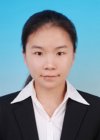 In this Thesis the focus is on new polymer functional micro- and nanofibers, for potential applications as: responsive membranes, reactive porous systems, actuators, and functional biomedical constructs.
In this Thesis the focus is on new polymer functional micro- and nanofibers, for potential applications as: responsive membranes, reactive porous systems, actuators, and functional biomedical constructs.
Novel approach
‘Our approach was novel,’ says Yan Liu. ‘Special emphasis has been laid on combining chemistry, innovative fiber spinning techniques, fiber functionalization, and eventually, fiber assembly.’
First, by utilizing microfluidics, functional alginate core-shell hydrogel microfibers were prepared. ‘Structure, dimensions and properties could be controlled by the synthetic procedures,’ Yan says. ‘Also we could vary the spinning process itself. Hydrogel microfiber bundles could lift up to 180 times the weight of their own, upon the action of an external stimulus such as temperature.’
Another central theme was making fibers by electrospinning. ‘This provided fibrous mats for further functionalization,’ Yan explains. ‘The application fields vary considerably. One could think of new membranes (thermoresponsive membranes with switchable wettability were introduced), coating layers, or combining similar functional layers. Also using the platform for new drug delivery strategies seems feasible.’
Functional polymer nanofibers were synthesized by surface-initiated ATRP (atom transfer radical polymerization). ‘These fibers possess large specific surface area and functional sites,’ Yan writes. ‘In fibrous architectures actuator applications are feasible.’
Further, more complex, steps were taken regarding to sandwich structures, using so-called “Janus constructs”. ‘Here, an adhesive side can be combined with the other side displaying protein antifouling, using functionalized electrospun mats,’ Yan says. ‘We were able to incorporate these microfibers by a hydrogel matrix. I am convinced these 3D constructs have great potential to act as carriers of biofactors, or cells, in biomedical engineering.’
Multidisciplinary
Being the first in her Group (Materials Science & Technology of Polymers, MTP) to focus on these fibers, Yan maintained a multidisciplinary approach. ‘I collaborated with various Mesa+ Groups, specialized in Physical & Chemical Engineering, Membrane Science and Materials Chemistry and Interfaces,’ she sums up. ‘I very much liked the open research atmosphere.’
Future plans
During the four years of her PhD project, Yan found herself working far more independently, designing and performing all kinds of experimental work and setups.
‘I favour a career in academics now,’ she says. ‘The professional approach and research passion of Professor Julius Vancso influenced me greatly. A working environment in physical and chemical engineering would suit me very well. In the more far away future, I would like to return as an experienced academic researcher to China one day. Nowadays, science and research are quite similar to the academic atmosphere in Europe, I believe. To bring in my skills and experience would be a great challenge for me.’
